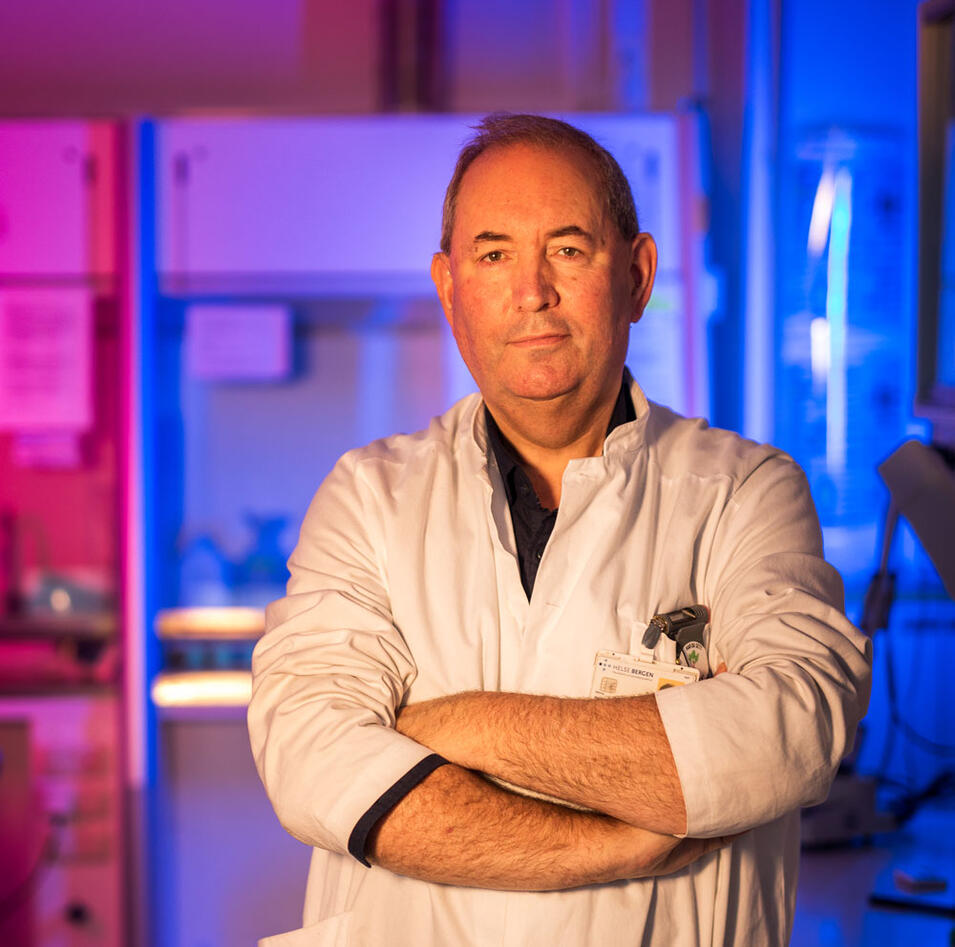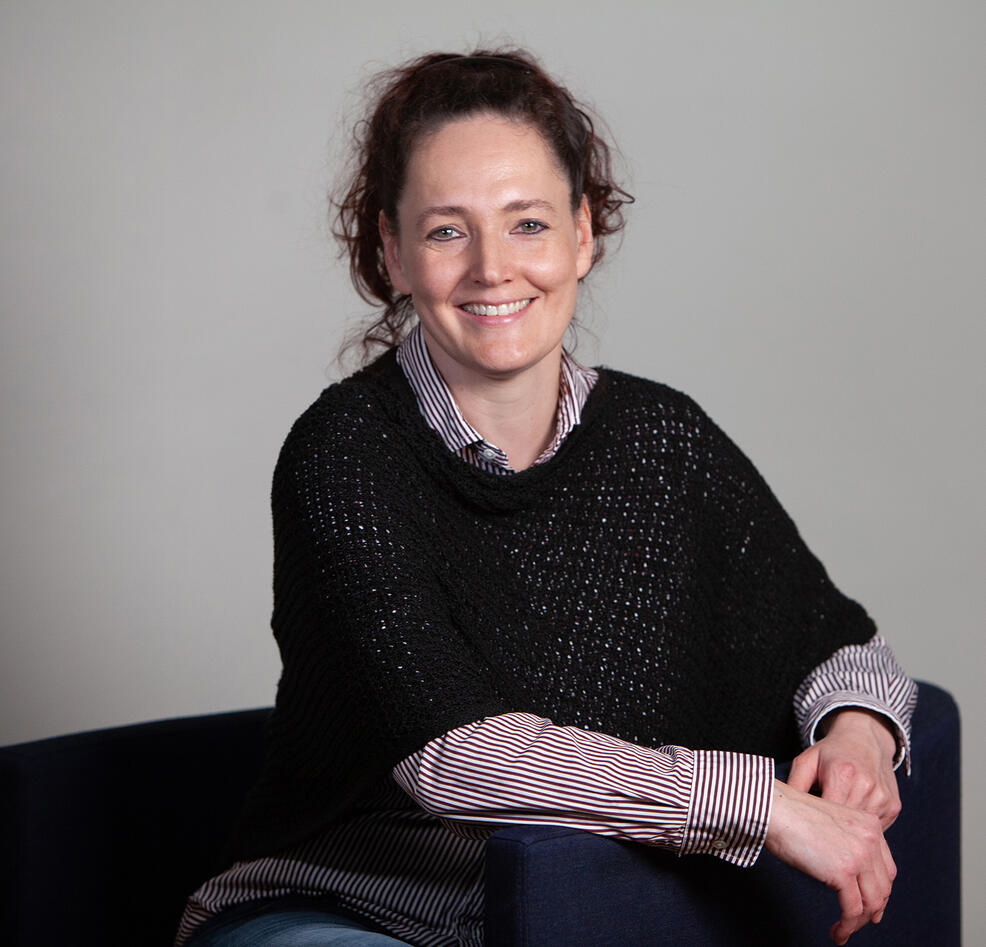Current articles from CCBIO PIs in high impact journals
CCBIO would like to highlight recent publications in high impact journals.

Main content
Apart from the Tislevoll publication on AML in Nature Communications, we would also like to highlight other recent publications in high impact journals.
Possible novel cancer treatment strategy
Lars A. Akslen's group in collaboration with Randy Watnick and Rolf Brekken has recently published the work PRSS2 remodels the tumor microenvironment via repression of Tsp1 to stimulate tumor growth and progression in Nature Communications. Here, the authors identify a novel tumor-mediated mechanism that represses the expression of Tsp-1 in the TME via secretion of the serine protease PRSS2. The data showed that PRSS2 represses Tsp-1, not via its enzymatic activity, but by binding to low-density lipoprotein receptor-related protein 1 (LRP1). These findings describe a hitherto undescribed activity for PRSS2 through binding to LRP1 and represent a potential therapeutic strategy to treat cancer by blocking the PRSS2-mediated repression of Tsp-1.
Professor Akslen believes that this can lead to intriguing results. “This paper has revealed a novel mechanism in the tumor microenvironment by which PRSS2 can enhance tumor growth and progression. This has been indicated experimentally and by studies of human cancer cohorts. Our findings indicate that PRSS2 repression might represent a novel cancer treatment strategy,” he explains.
Fibroblast subsets in non-small cell lung cancer
Arne Östman and Carina Strell are co-authors in the publication Fibroblast subsets in non-small cell lung cancer: Associations with survival, mutations, and immune features in the Journal of the National Cancer Institute.
Cancer-associated fibroblasts (CAFs) are molecularly heterogeneous mesenchymal cells that interact with malignant cells and immune cells and confer anti- and protumorigenic functions. Prior in situ profiling studies of human CAFs have largely relied on scoring single markers, thus presenting a limited view of their molecular complexity. The objective of this work was to study the complex spatial tumor microenvironment of non-small cell lung cancer (NSCLC) with multiple CAF biomarkers, identify novel CAF subsets, and explore their associations with patient outcome.
The group identified multimarker-defined CAF subsets through high-content spatial profiling. The robust associations of CAFs with driver mutations, immune features, and outcome suggest CAFs as essential factors in NSCLC progression and warrant further studies to explore their potential as biomarkers or therapeutic targets. This study also highlights multiplex fluorescence immunohistochemistry-based CAF profiling as a powerful tool for the discovery of clinically relevant CAF subsets.
Spatial genomics maps the structure, nature and evolution of cancer clones
We also recommend to take a look at the article Spatial genomics maps the structure, nature and evolution of cancer clones in Nature where Carina Strell is co-author in a collaborative effort with the teams of Mats Nilsson (Stockholm University), Lucy Yates (Sanger Institute) and Moritz Gerstung (EMBL-EBI).
The authors presented an adaptation of the classical in situ sequencing approach allowing for base-specific mapping of expressed mutations in the tissue context called BaSISS (base specific in situ sequencing). Tissue samples from two cases of multifocal breast cancer covering stages from DCIS, invasive cancer and lymph node metastasis were analyzed in the study. The basis workflow (see Fig) consists of three core steps starting with bulk WGS for subclone detection and the design of padlock-probes specific towards clone-defining mutations and their corresponding wild-type alleles. In the second step is the transcript detection by in situ sequencing, and here, the BaSISS probe panel can be supplemented with conventional mapping of gene expression pattern on sequential slides. In the third final step, statistical algorithms are applied to generate continuous subclone maps on top of the histological tissue context and to integrate all additional layers of spatial data.
CCBIO Associate PI Carina Strell was part of this collaborative efforts as a member of the Mats Nilsson team. “It was very exciting to be part of this advancement of the in situ sequencing technology,” she explains. “BaSISS is a unique tool which gives us for the first time the opportunity of spatial clonal linage tracing in human tissue samples along with a characterization of the adjacent microenvironment and the histological context. It was also a great pleasure to work with Lucy Yates, who was leading this project, and is one of the most inspiring collaborators I have worked with,” Strell says.
In this study by Yates and collaborators, it was revealed that nearly all outlined breast cancer subclones showed a distinct histology and gene expression, as well as microenvironmental niche organization. Furthermore, they noted that within the analyzed cases many – if not all – genetic events required for invasion were already acquired intraductal. The BaSISS approach is an excellent addition to already established tissue profiling techniques. The ability to now also chart clonal growth pattern in the tissue context will help researchers to gain insight into the evolutionary processes behind cancer progression and their regulation.
Lucy Yates will give a CCBIO seminar on February 23rd. This is an open event.


